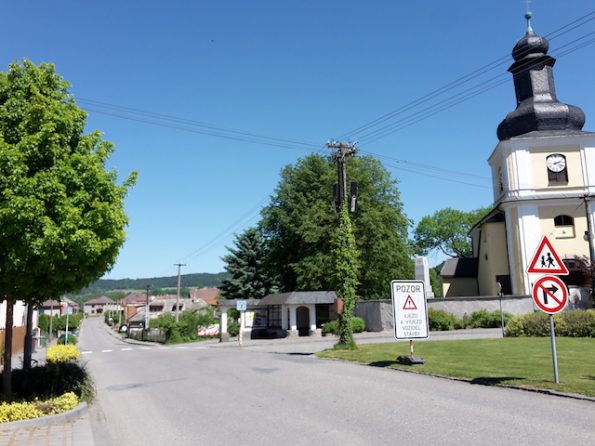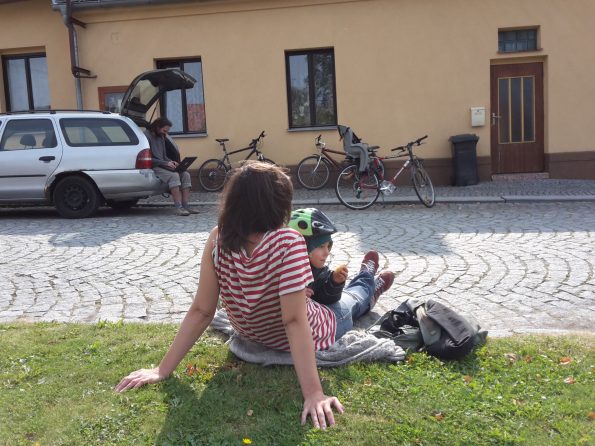When the church bells ring and one bikes fast enough, you can hear the sound shifting lower as you move across the waves. Like a siren on a car.
Bring your bike, smart phone or recording gear. Special benefits for the one that records this acoustic phenomenon best! Everyone can try! Bring kids, friends, family, …
Gathering at 9.30 am in front of Sv. Jiljí church in Libice nad Doubravou.
Recording/biking sessions each hour: 10-11-12h sharp!
Practically
Bring a bike. And portable recording gear: a tablet, a dictaphone, a telephone , or a digital recorder. Don’t forget headphones and, in case of rain, protection against the water.
How are we going to record? We wait for the churchbells to ring, and then ride as fast as possible past the church while recording the sound. Either you do it with two (one is riding the bike and the other is recording) or alone.
(There are many apps for smart phones around. We are using on Android Audio Recorder, which is able to record without compression in wav file format. The best is to bring a digital recorder like a Zoom, Yamaha, Tascam, Roland, Olympus, Sony, or any other brand, and if you really want to look professional, external microphones with wind shields can improve the quality tremendously.)
Theoretically
An explanation of the phenomenon you can read here: Doppler Effect. Christian Doppler was an Austrian scientist, who started to work in 1835 in Praha at what is now ČVUT. There he developed the Doppler Effect theory, and gave his renowned lecture at the Royal Bohemian Society of Sciences on May 25, 1842, relating the phenomenon to astronomy and physics. [This year 175 years ago, let’s celebrate!]
The Doppler effect (or the Doppler shift) is the change in frequency or wavelength of a wave for an observer who is moving relative to the wave source. Compared to the emitted frequency, the received frequency is higher during the approach, identical at the instant of passing by, and lower during the recession.
As an example, listen to the speeding car horn sample. Most of the given examples are with a moving source and a static observer. A probably fictitious story tells that Doppler to demonstrate the theory, mounted a local marching band on a horse cart, moving it as fast as possible past the audience of scientists and astonished villagers.
But we are trying it out on bikes, leaving the source static and moving the observer/soundrecorder. The church remains where it is and we move around on our bikes. It should produce the same effect. But there are a lot of theoretical questions, like what speed should we bike, with the given church bell pitch (around 700 Hz, or F5)?
Here is the equation, you would need the speed of sound at 400 meters above sea level, and the temperature will be between 16 – 18˚C… Any idea?
There is also a problem with the timing. We can only record 3 times: at 10, 11, and 12 o’clock sharp. Let’s try!
UPDATE
The recordings were rough, wild and nicely interwoven with the environment. On what bike do you think Doppler was riding? Enjoy the recordings (not for sensitive ears).
All the sound recordings of the day:



